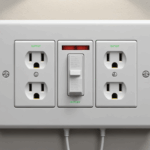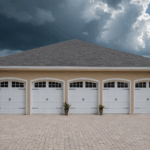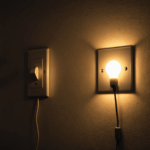Over the past decade, the concept of a “smart home” has shifted from science fiction to mainstream reality, revolutionizing how we interact with our living spaces. The integration of Artificial Intelligence (AI) in home automation is at the forefront of this transformation, poised to redefine convenience, security, and efficiency in 2025 and beyond. As our lives become more intertwined with technology, understanding the influence of AI-driven automation on home environments ensures we stay ahead of the curve in home improvement. This evolution is driven by an increasing consumer demand for ease of use, energy conservation, and personalized experiences.
Target audiences seeking home improvement or looking to upgrade their residence can find a wealth of options in AI-enhanced home systems. These innovations cater not only to tech-savvy individuals but also to those who value sustainability and security in their residences. The global smart home market is projected to reach a valuation of $135.3 billion by 2025 (Statista, 2023), underscoring the growing importance of AI technology in making our homes not only smarter but also more adaptive to individual needs and environmental concerns.
Users today expect their home systems to think, anticipate, and respond autonomously. Enter AI: a set of powerful algorithms capable of learning the nuances of household habits and preferences. AI in home automation involves systems that intelligently manage various home functions such as lighting, climate control, and entertainment, based on user behavior and environmental conditions. Devices such as smart speakers are often the first point of contact with AI in many households. Equipped with voice-assisted AI like Amazon’s Alexa or Google Assistant, these devices serve as both information hubs and control centers, allowing for seamless interaction with other smart devices.
Moreover, AI has paved the way for predictive maintenance in home environments. By continuously analyzing usage patterns and device performance, AI systems can preemptively alert homeowners to necessary maintenance or optimize the operation of appliances to prolong their service life. For instance, an AI-driven thermostat could detect a furnace inefficiency, notify the homeowner, and suggest a repair before the system fails. This proactive maintenance model saves both time and money, aligning with the growing demand for cost-effective and sustainable living solutions.
The implementation of AI doesn’t stop at convenience. Security, a paramount concern in home improvement, benefits significantly from AI technology. Modern security systems now feature AI-based surveillance capabilities, where cameras equipped with image recognition technology can distinguish between potential threats and benign activities, reducing false alarms and enhancing response times. These systems learn over time to recognize regular patterns and identify anomalies, significantly enhancing protective measures without constant manual oversight.
As AI continues to evolve in sophistication, its role in smart homes is expected to expand further. By 2025, AI technology will likely enable even more robust home automation systems that offer seamless interoperability across devices, making every aspect of home management more unified and intuitive. Embracing these changes not only caters to the evolving demands of modern living but also lays the groundwork for a future where homes can respond intelligently and sustainably to the changing world around them.
energy efficiency and sustainability
As we approach 2025, energy efficiency and sustainability are growing facets of the smart home movement, contributing immensely to the advancement of home improvement technology. These concepts are more than just buzzwords; they are essential components that help reduce environmental impact while enhancing the living experience. The integration of sustainable practices through smart technology can lead to reduced utility expenses and a smaller carbon footprint, making them crucial considerations for the environmentally-conscious homeowner.
Innovations in energy-efficient smart home systems can come in numerous forms, each contributing uniquely to sustainability. Smart thermostats, for instance, are becoming increasingly prevalent due to their ability to learn inhabitant behaviors and adjust heating and cooling systems accordingly. By optimizing energy usage based on lifestyle patterns, these devices ensure that energy is not wasted, while still maintaining a comfortable home environment. Furthermore, advancements in energy-efficient lighting, such as LED bulbs controlled by sophisticated smartphone applications, allow users to tailor their lighting needs to specific parts of the day or activities, thus minimizing excess energy consumption.
Moreover, smart appliances now incorporate intelligent energy management systems, enabling homeowners to monitor and control their energy use in real-time. This transparency encourages informed decision-making, helping individuals find new ways to conserve resources. Solar technology integration is another transformational trend. With solar panels equipped with smart features, homeowners can not only harness clean energy but also track production and consumption levels, making it easier to achieve a net-zero energy home.
Equally important, these technologies can significantly increase the home’s overall value, a key factor for those considering future-proof home improvement investments. Thus, integrating energy efficiency and sustainability into your smart home is not just a matter of supporting eco-friendly practices but also a strategic move towards enhancing property value and reducing long-term costs.
- Smart thermostats can automatically adjust settings based on weather forecasts, occupant behavior, and even utility time-of-use pricing to maximize efficiency.
- LED smart bulbs last longer than traditional bulbs and can be scheduled or controlled remotely to enhance energy savings and convenience.
- Smart home systems that integrate solar panels allow for real-time energy production tracking, facilitating efficient energy use planning.
- Appliances with energy-monitoring features provide detailed insights into energy consumption, helping identify improvement areas for reducing usage.
- Implementing sustainable smart technology solutions can boost home resale value, attracting environmentally-conscious buyers in the future marketplace.
integrated security solutions
When it comes to enhancing the safety and security of your living space, current smart home technology offers a plethora of options tailored to various needs. However, the appeal of integrated security solutions can lead to some common missteps that homeowners should be mindful of in order to maximize safety and efficiency.
One of the most prevalent errors is the assumption that a generic, one-size-fits-all solution will adequately address unique household security needs. Homeowners often invest in multiple devices without fully understanding the capabilities of each, which can lead to redundant features or overlooked vulnerabilities. To avoid this, a thorough assessment of your home’s particular entry points, valuable assets, and lifestyle habits should inform the selection of a tailored security system. Consulting with a security technology specialist can help identify the best components and configurations for your specific circumstances.
Another common mistake is neglecting to establish a secure home network. Smart security systems often rely on internet connectivity to function. If your network is not properly secured, it can become a potential entry point for cyber threats. Basic safeguards include changing default passwords, using strong, unique passwords for your devices and network, enabling firewall protections, and keeping all software up to date. Additionally, using network encryption protocols such as WPA3 adds an extra layer of security, making it more challenging for unauthorized individuals to access your system.
Additionally, many homeowners overlook the importance of routine maintenance and updates. Security systems are not simply ‘set-it-and-forget-it’. They require regular testing to ensure proper functionality, as well as software updates to protect against emerging threats. Setting reminders for regular checks and staying informed about manufacturer updates can prevent lapses in security and maintain system integrity.
Furthermore, some homeowners make the error of not integrating their systems for maximum efficiency. Investing in disparate devices without ensuring they are compatible and can communicate with one another often results in a fragmented security landscape. To address this, prioritize selecting components that are compatible with a single smart home platform. Interoperability ensures that all devices can work together seamlessly, providing comprehensive coverage with centralized management from a single interface.
Lastly, avoiding over reliance on technology alone is crucial. While technological integration is a powerful tool in modern home security, it should be complemented by basic safety measures like secure locks, exterior lighting, and neighborhood awareness. By combining innovative smart home solutions with traditional security practices, homeowners can cultivate a robust security environment that minimizes risks and increases peace of mind.
personalized user experiences
In today’s rapidly evolving tech landscape, the demand for personalized experiences within the home continues to grow, transforming the way we perceive daily comfort and convenience. Enhancements in smart home technology promise to make homes more intuitive and responsive to individual preferences by 2025, offering an ever-expanding array of personalization options that cater to unique lifestyles.
From voice-activated commands that set the ideal morning routine to smart lighting systems that adjust hues and brightness levels based on user moods, the personalization of smart homes is only limited by imagination. These technologies create an environment where the home adapts to its occupants rather than the other way around. Smart mirrors, for instance, can display personalized information like weather updates, schedules, or even skincare recommendations based on a face scan.
In the realm of entertainment, AI-driven platforms can curate movie, music, or podcast recommendations that align with your tastes, creating a cinematic experience tailored right in the comfort of your own home. Similarly, smart kitchens can suggest recipes that fit dietary preferences and ingredient availability, ensuring that culinary experiences are as convenient as they are healthy.
Moreover, personal wellness is stepping into the spotlight with adaptive home environments that focus on health and well-being. Smart sensors and wearables now integrate seamlessly into the home ecosystem, monitoring vital signs and suggesting adjustments to ambient conditions such as humidity or temperature to optimize health. These capabilities turn homes into personal wellness retreats, with the goal of enhancing physical and mental well-being through intelligent living spaces.
To truly maximize the potential of a personalized smart home, it’s essential for these systems to work harmoniously. Ensuring the interoperability of devices and platforms is crucial for a seamless user experience. Prioritizing home improvement investments in a central smart hub can simplify device management and enhance network efficiency across the board, laying the foundation for a home that’s as smart as it is personalized.
By embracing these transformative advancements, homeowners can create an environment that embodies comfort, efficiency, and identity. As personalized user experiences continue to evolve, they present an exciting pathway towards a future where technology and individuality coexist in perfect harmony.
connectivity and interoperability
Smart home technology thrives on connectivity and interoperability, serving as the backbone of a seamless and efficient living environment. In 2025, the primary focus is on ensuring that all devices and systems within a smart home ecosystem communicate effectively with each other, regardless of the manufacturer or platform. This harmonized interaction empowers homeowners to control and automate their home environment effortlessly, maximizing both convenience and functionality.
The emergence of open standards and universal platforms plays a critical role in achieving true interoperability. By adhering to these guidelines, devices can join a cohesive network that minimizes complexity for the user. This means that a smart thermostat, lighting system, or security camera from different brands can work together smoothly, controlled by a single hub or even directly through voice-activated smart assistants. The consistency in communication protocols allows users to manage and automate tasks with greater ease and reliability, ensuring that their smart home is both user-friendly and responsive.
Connectivity is further enhanced by advancements in wireless technology, including faster Wi-Fi standards and expanded signal coverage, which ensure that devices remain online and operational without interruption. Robust and reliable network infrastructure is vital for supporting the growing number of connected devices in a smart home. Homeowners can optimize device performance by investing in technologies like mesh networks, which eliminate dead zones and provide consistent internet access throughout the home.
Additionally, as smart homes become increasingly integrated, security concerns regarding connectivity come to the forefront. A secure and trusted network is imperative. Implementing best practices such as network segmentation, secure passwords, and regular software updates becomes essential to protect against cyber threats. These measures not only safeguard individual devices but also ensure the overall integrity of the interconnected system.
As smart home technology continues to evolve, the emphasis on interoperability and connectivity is crucial. By creating a unified and secure network for devices to thrive in, homeowners can enjoy the full benefits of a smart home — a space that is not only smarter but also more intuitive and aligned with the rapid pace of technological advancements.
- How can I ensure all my smart home devices work well together?
- To ensure compatibility among smart home devices, consider choosing products that support common standards like Zigbee, Z-Wave, or Wi-Fi and are designed to work with your central smart home hub or platform. Researching compatibility before purchasing and opting for devices from reputable manufacturers can streamline integration.
- What are the best practices to secure my smart home network?
- Securing your smart home network involves changing default passwords on devices, using strong and unique passwords, enabling network encryption protocols such as WPA3, and keeping all firmware and software up to date. Implementing network segmentation can also isolate smart devices from your main network, adding an extra layer of security.
- Will adding more smart home devices strain my internet connection?
- Increasing the number of smart home devices can impact your internet bandwidth, especially if they constantly communicate or update in real time. Using a mesh network system can better distribute the internet signal throughout your home, reducing strain and maintaining device performance.
- Can I integrate devices from different brands into one smart home system?
- Yes, many smart home systems are designed to work across different brands, especially if they adhere to the same communication standards. A centralized hub or smart assistant can often manage devices from various manufacturers, enabling seamless automation and control.
- Is it necessary to update the software of my smart home devices regularly?
- Regular software updates are essential for enhancing functionality and addressing security vulnerabilities. Staying current with updates ensures that your devices maintain optimal performance and are protected against emerging cybersecurity threats.










